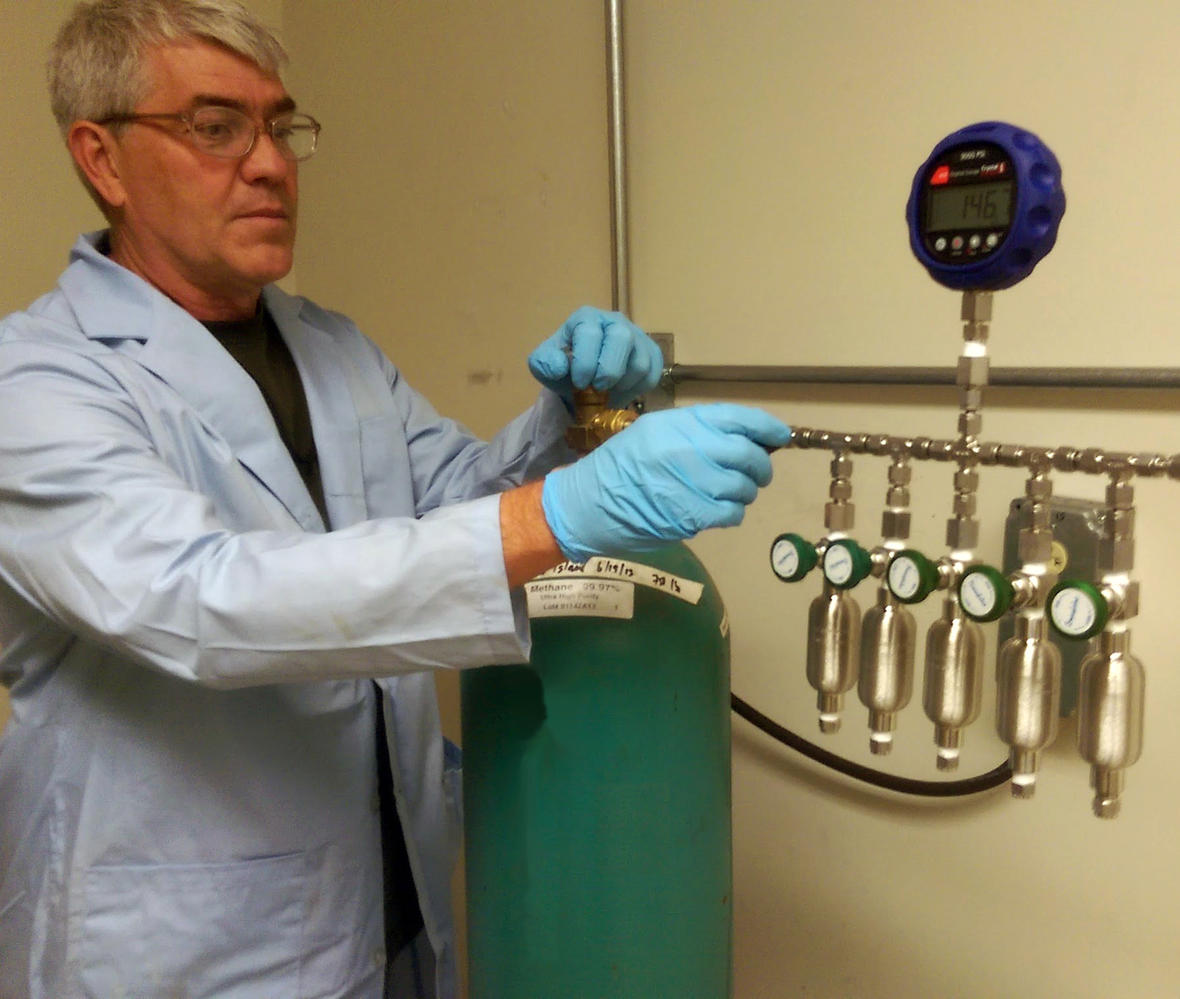USGS Releases New Standards for Natural Gas

The U.S. Geological Survey has released new natural gas standards. These reference gases are the replacement for the prior standards maintained by the U.S. National Institute of Standards and Technology.
The natural gas standards are intended to serve as the primary carbon and hydrogen stable isotope reference materials for methane, ethane, and propane, and will be used in research and technology development by industry, academia, and governmental agencies.
“When NIST announced that they would no longer distribute the old natural gas standards, we knew we had to step up to replace them,” said USGS scientist Geoffrey Ellis, Research Geologist with the Energy Resources Program. “However, we also knew that this undertaking would go beyond just the USGS and we’re very thankful to those outside the USGS who have contributed valuable time and resources for the successful completion of this project.”
The development of the standards was guided by a 28-person technical advisory committee, made up of natural gas experts from academic, industrial, and governmental agencies from around the world. The values for the gas standards came from analytical work performed at the USGS and Isotech Laboratories.
Although the committee provided valuable oversight throughout the development of the standards; ultimately, the USGS is solely responsible for the standard gases and the process that led to their development.
A consensus was reached as to the desired molecular and stable isotopic composition of a new suite of gas standards. Rather than trying to find produced natural gases that covered the targeted compositions, the USGS proposed, and the committee agreed, that it would be best to make the mixtures from commercially available pure components (where possible). The work took several years to complete and ultimately led to the development of three mixtures of natural gas:
- Light Mixture: This standard was collected from a biogenic gas field in Northern Colorado, because it was not possible to locate isotopically light components for this mixture. The mixture is labeled as USGS HCG-3 (U.S. Geological Survey Hydrocarbon Gas 3).
- Intermediate Mixture: This standard is a blend of pure component gases that have isotopic compositions close to the target values. The mixture is labeled USGS HCG-2.
- Heavy Mixture: This standard was created by adding small aliquots of isotopically heavy methane, ethane, and propane into cylinders of the intermediate mixture. These components were then blended together to make the heavy mix. The mixture is labeled USGS HCG-1.
A full report on the development and certification of the natural gas standards is currently in preparation. More information about the new natural gas standard can be found at https://energy.usgs.gov/GeochemistryGeophysics/GeochemistryLaboratories/GasStandards.aspx.
Related News
Related News

- Keystone Oil Pipeline Resumes Operations After Temporary Shutdown
- Biden Administration Buys Oil for Emergency Reserve Above Target Price
- Freeport LNG Plant Runs Near Zero Consumption for Fifth Day
- Enbridge to Invest $500 Million in Pipeline Assets, Including Expansion of 850-Mile Gray Oak Pipeline
- Williams Delays Louisiana Pipeline Project Amid Dispute with Competitor Energy Transfer
- Evacuation Technologies to Reduce Methane Releases During Pigging
- Editor’s Notebook: Nord Stream’s $20 Billion Question
- Enbridge Receives Approval to Begin Service on Louisiana Venice Gas Pipeline Project
- Russian LNG Unfazed By U.S. Sanctions
- Biden Administration Buys Oil for Emergency Reserve Above Target Price




Comments